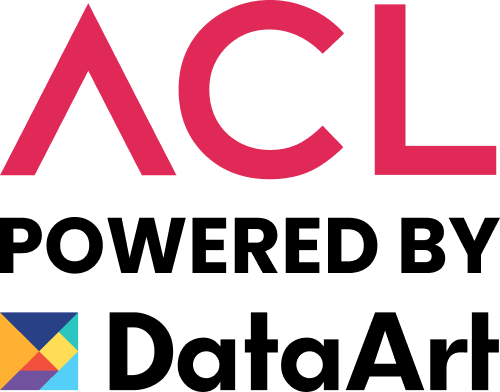The demand for software development services has skyrocketed in recent years, driven by the need for companies to innovate rapidly and stay ahead of the competition. However, finding the right talent at the right price remains a challenge for many businesses. Enter nearshore software development, a strategic approach that combines the benefits of outsourcing with the advantages of proximity. In this comprehensive guide, we'll explore everything you need to know about nearshore software development, from its key benefits to choosing the best nearshore software development company for your needs.
What is Nearshore Software Development?
At its core, nearshore software development refers to outsourcing software development tasks to a neighboring or nearby country, usually within the same or similar time zones. This practice is distinct from offshoring, where services are outsourced to more distant countries, often leading to challenges such as significant time zone differences and cultural barriers.
Nearshore development has grown in popularity due to the increasing need for companies to remain agile while managing costs and maintaining high-quality output. By working with a nearshore software development company, businesses can achieve a balance between cost savings and efficient collaboration, making it a viable alternative to traditional offshoring.
The Evolution of Nearshoring in the Tech Industry
The concept emerged as a response to the limitations of traditional offshoring. While offshoring allowed companies to access cheaper labor, it often resulted in communication hurdles, delayed project timelines, and quality concerns. Nearshoring addresses these issues by leveraging geographical proximity, which facilitates easier communication, cultural alignment, and faster project turnaround times.
Initially, nearshoring was mainly popular among companies in North America, particularly those outsourcing to Latin American countries. However, as the tech industry expanded globally, European companies also began to embrace nearshoring, collaborating with partners in Eastern Europe and other nearby regions. This shift has resulted in a more diverse and competitive nearshore software development market.
Why Nearshore Software Development is Gaining Popularity
One of the primary drivers is the increasing need for speed and flexibility in software development. In today's fast-paced market, companies must be able to respond quickly to changing customer demands and technological advancements. Nearshore development allows businesses to work with skilled developers in similar time zones, ensuring real-time collaboration and faster decision-making.
Additionally, the COVID-19 pandemic has accelerated the adoption of remote work, making nearshore software development an even more attractive option. Companies have realized that physical proximity is less important than effective communication and collaboration, which nearshoring provides.
Benefits of Nearshore Software Development Compared to Offshoring
When considering outsourcing, businesses often weigh the pros and cons of nearshore vs. offshore software development. Here are some key benefits of nearshore software development that make it a preferred choice for many companies:
- Cultural and Time Zone Alignment: Nearshore partners often share similar cultural backgrounds and work within the same or overlapping time zones, leading to smoother communication and fewer misunderstandings.
- Cost-Effective Solutions: While nearshoring may not offer the rock-bottom prices of offshoring, it provides a better balance between cost and quality, reducing the risk of costly project delays or rework.
- Faster Project Delivery: Proximity allows for more frequent and effective communication, enabling faster problem-solving and quicker project delivery.
- Higher Quality of Work: Nearshore companies often have more stringent quality standards and a better understanding of client expectations, resulting in higher-quality deliverables.
- Streamlined Communication and Collaboration: With fewer time zone differences, teams can collaborate more efficiently, leading to better project outcomes.
Cost-Effective Solutions
One of the most compelling reasons to choose nearshore software development is its cost-effectiveness. While it may not be as inexpensive as offshoring to countries with the lowest labor costs, nearshoring offers a more balanced approach that prioritizes both cost and quality. Companies can achieve significant savings without compromising on the quality of work, making nearshore software development an ideal solution for businesses looking to maximize their ROI.
Moreover, nearshoring reduces the hidden costs often associated with offshoring, such as prolonged project timelines, increased management overhead, and potential quality issues. By working with a nearshore software development company, businesses can minimize these risks while still enjoying competitive pricing.
Cultural and Time Zone Alignment
Another significant advantage of nearshore software development is cultural and time zone alignment. Unlike offshoring, where teams may be working in completely different time zones, nearshoring allows for more synchronous collaboration. This alignment is crucial for projects that require constant communication, rapid feedback, and quick decision-making.
Cultural alignment also plays a vital role in the success of nearshore software development projects. Teams that share similar cultural backgrounds are more likely to understand each other's communication styles, work ethics, and business practices. This leads to smoother interactions, fewer misunderstandings, and a more cohesive working relationship.
Access to a Broad Talent Pool
One of the misconceptions about nearshore software development is that it limits access to top talent. In reality, nearshoring opens up a vast pool of skilled developers across various regions. Whether you're looking for expertise in specific technologies, industry experience, or innovative problem-solving skills, nearshore software development companies can provide access to the talent you need.
Countries like Mexico, Colombia, Poland, and Romania have become hotspots for nearshore software development, offering a rich talent pool of developers proficient in the latest technologies. These regions also boast a strong educational infrastructure and a growing tech ecosystem, ensuring a continuous supply of skilled professionals.
Streamlined Communication and Collaboration
Effective communication is the cornerstone of any successful software development project. Nearshore software development companies excel in this area, thanks to their proximity to clients and cultural similarities. With fewer time zone differences, teams can hold regular meetings, address issues promptly, and ensure that everyone is on the same page.
Moreover, nearshore teams often adopt agile methodologies, which emphasize continuous communication, iterative development, and flexibility. This approach allows for rapid adjustments, reducing the likelihood of project delays or scope creep. By partnering with a nearshore software development company, businesses can enjoy a more collaborative and transparent development process.
Higher Quality of Work
Quality is a top priority for any software development project. Nearshore software development companies understand this and often have stringent quality control measures in place. These companies are typically well-versed in international standards and best practices, ensuring that their deliverables meet or exceed client expectations.
Additionally, nearshore teams are more likely to have a deep understanding of the client's business context, leading to solutions that are more aligned with the client's goals and requirements. This focus on quality, combined with the benefits of proximity, makes nearshore software development a smart choice for businesses seeking reliable and high-performing software solutions.
Faster Project Delivery
Time is of the essence in software development, and nearshore software development companies are well-equipped to deliver projects on time. The combination of effective communication, agile methodologies, and a skilled workforce allows nearshore teams to work efficiently and respond quickly to changing requirements.
Moreover, the reduced time zone differences mean that teams can work in sync, with fewer delays caused by asynchronous communication. This leads to faster decision-making, quicker problem resolution, and ultimately, faster project delivery. For businesses that need to bring products to market quickly, nearshore software development offers a significant competitive advantage.
Choosing the Right Nearshore Software Development Company
Selecting the right nearshore software development company is crucial to the success of your project. With so many options available, it can be challenging to determine which partner is the best fit for your needs. Here are some factors to consider:
- Technical Expertise and Industry Experience: Ensure that the company has the technical skills and experience relevant to your project. Look for case studies and client testimonials that demonstrate their capabilities.
- Communication and Project Management Practices: Effective communication is key to a successful partnership. Evaluate the company's communication style, responsiveness, and project management processes.
- Cultural Fit and Alignment: Consider whether the company's culture aligns with your own. A good cultural fit can lead to smoother collaboration and better project outcomes.
- Reputation and Reliability: Research the company's reputation in the industry. Check online reviews, ask for references, and consider their track record of delivering projects on time and within budget.
By carefully evaluating these factors, you can select a nearshore software development company that meets your specific needs and helps you achieve your business goals.
Evaluating Technical Expertise and Industry Experience
When choosing a nearshore software development company, technical expertise and industry experience should be at the top of your list. The right partner should have a deep understanding of the technologies and methodologies relevant to your project. This includes not only technical skills but also experience in your specific industry.
For example, if you're developing a fintech application, you'll want to work with a company that has experience in financial services and understands the unique challenges and regulatory requirements of the industry. Similarly, if you're building an e-commerce platform, you'll need a partner who has a track record of delivering high-performance, scalable solutions.
Don't be afraid to ask potential partners for case studies, client references, and examples of previous work. This will give you a better sense of their capabilities and help you make an informed decision.
Checking Communication and Project Management Practices
Effective communication is essential for a successful nearshore software development partnership. When evaluating potential partners, pay close attention to their communication and project management practices. A good nearshore software development company should have clear and transparent communication channels, as well as a structured approach to project management.
Look for companies that use agile methodologies, which emphasize collaboration, flexibility, and continuous improvement. Agile practices such as daily stand-ups, sprint reviews, and retrospectives can help ensure that your project stays on track and that any issues are addressed promptly.
Additionally, consider the tools and technologies the company uses for communication and project management. Modern tools like Slack, Jira, and Trello can facilitate real-time collaboration and keep everyone aligned on project goals and progress.
Popular Destinations for Nearshore Software Development
When it comes to nearshore software development, location matters. Different regions offer different advantages, from talent availability to cost-effectiveness. Here are some of the most popular destinations:
- Latin America: Countries like Mexico, Colombia, Argentina, and Brazil are top choices for nearshoring, especially for U.S. companies. Latin America offers a large pool of skilled developers, cultural affinity, and similar time zones, making it an ideal nearshore destination.
- Eastern Europe: Poland, Ukraine, Romania, and Hungary are among the leading nearshore destinations for European companies. These countries are known for their strong technical education systems, high-quality work, and competitive pricing.
- Asia-Pacific: While not as commonly associated with nearshoring as Latin America or Eastern Europe, some countries in the Asia-Pacific region, such as the Philippines and Malaysia, offer nearshore services to companies in Australia and New Zealand.
Latin America: A Hub for Nearshore Development
Latin America has emerged as a hub for nearshore software development, particularly for companies based in the United States and Canada. The region offers a unique combination of advantages that make it an attractive nearshore destination.
First and foremost, Latin America boasts a large and growing pool of talented developers. Countries like Mexico, Brazil, and Colombia have invested heavily in education and technology, producing a steady stream of skilled professionals. Additionally, the region's cultural affinity with North America, coupled with similar time zones, facilitates smooth communication and collaboration.
Moreover, Latin American countries often offer competitive pricing compared to onshore or offshore options, making them a cost-effective choice for businesses looking to optimize their development budgets. Whether you're developing a mobile app, an e-commerce platform, or an enterprise solution, Latin America provides the expertise and resources needed to bring your project to life.
Key Considerations for Choosing a Nearshore Location
When selecting a nearshore location, it's essential to consider several factors to ensure the success of your software development project. Here are some key considerations to keep in mind:
- Proximity and Time Zone: Choose a location that aligns with your time zone to facilitate real-time communication and collaboration.
- Talent Availability: Assess the availability of skilled developers in the region. Consider the local education system, the tech ecosystem, and the region's track record in delivering quality software solutions.
- Cultural Compatibility: Evaluate the cultural fit between your company and the nearshore location. A good cultural alignment can lead to smoother interactions and better project outcomes.
- Political and Economic Stability: Consider the region's political and economic stability, as this can impact the reliability and longevity of your nearshore partnership.
By carefully evaluating these factors, you can choose a nearshore location that meets your specific needs and sets your project up for success.
How Nearshore Software Development Works
Understanding how nearshore software development works is crucial to making the most of this outsourcing model. Unlike offshoring, where distance can create communication barriers, nearshoring leverages geographical proximity to enhance collaboration and efficiency. Here's a closer look at how nearshore software development works and what you can expect when partnering with a nearshore software development company.
Understanding the Nearshore Development Process
The nearshore development process typically begins with a thorough assessment of your project requirements and goals. Once you select a nearshore software development company, the partnership kicks off with a discovery phase, where the development team gathers detailed information about your project, including technical specifications, timelines, and deliverables.
Following the discovery phase, the team moves into the planning stage, where they outline the development roadmap, assign tasks, and establish communication protocols. Agile methodologies are commonly used in nearshore development, allowing for iterative progress, regular feedback, and continuous improvement throughout the project lifecycle.
Development then proceeds through sprints, with each sprint focusing on specific features or tasks. Regular check-ins and sprint reviews ensure that the project stays on track and aligns with your expectations. Once the development is complete, the nearshore team handles testing, deployment, and ongoing maintenance as needed.
Agile Methodologies in Nearshore Development
Agile methodologies are a cornerstone of nearshore software development. These methodologies emphasize collaboration, flexibility, and customer-centricity, making them ideal for dynamic and fast-paced projects. By using agile practices, nearshore software development companies can adapt quickly to changing requirements, deliver incremental value, and ensure that the final product meets your needs.
Common agile practices used in nearshore development include:
- Scrum: A framework that organizes work into sprints, with regular stand-ups, sprint reviews, and retrospectives to ensure continuous improvement.
- Kanban: A visual approach to managing work, allowing teams to track progress, identify bottlenecks, and optimize workflow.
- Extreme Programming (XP): A methodology that focuses on technical excellence, continuous testing, and customer feedback to deliver high-quality software.
By adopting agile methodologies, nearshore software development companies can deliver projects faster, with greater flexibility, and with a higher level of quality.
Common Challenges in Nearshore Collaboration and How to Overcome Them
While nearshore software development offers many advantages, it's not without its challenges. Understanding these challenges and knowing how to overcome them is essential for a successful partnership. Some common challenges include:
- Communication Gaps: Despite being in the same or similar time zones, communication gaps can still occur due to language differences or cultural misunderstandings. To overcome this, establish clear communication protocols, use collaborative tools, and ensure that all team members are aligned on expectations.
- Managing Expectations: Misaligned expectations can lead to frustration and delays. Be sure to set clear goals, deliverables, and timelines from the outset, and maintain regular communication to keep everyone on the same page.
- Quality Control: Ensuring consistent quality across all deliverables can be challenging. Implement rigorous quality assurance processes, conduct regular code reviews, and provide feedback to the development team to maintain high standards.
By addressing these challenges proactively, you can ensure a smooth and productive collaboration with your nearshore software development partner.
Tools and Technologies That Enhance Nearshore Collaboration
Effective collaboration is critical to the success of any nearshore software development project. Fortunately, there are numerous tools and technologies that can enhance communication, project management, and workflow. Some of the most popular tools used in nearshore development include:
- Communication Tools: Slack, Microsoft Teams, and Zoom for real-time communication and virtual meetings.
- Project Management Tools: Jira, Trello, and Asana for task tracking, sprint planning, and progress monitoring.
- Version Control Systems: GitHub and Bitbucket for source code management and collaboration.
These tools help bridge the gap between remote teams, ensuring that everyone stays connected, informed, and aligned throughout the project lifecycle.
Industry Applications of Nearshore Software Development
Nearshore software development is not limited to a specific industry; it has broad applications across various sectors. From fintech to healthcare, e-commerce to artificial intelligence, nearshore development offers a flexible and scalable solution for businesses looking to innovate and grow. Here's how different industries are leveraging nearshore software development to achieve their goals.
Nearshoring in Fintech: Driving Innovation
The fintech industry is one of the most dynamic and fast-paced sectors, requiring constant innovation and rapid development cycles. Nearshore software development companies play a crucial role in helping fintech companies stay ahead of the curve. By providing access to skilled developers with expertise in financial technologies, nearshore partners enable fintech companies to develop secure, scalable, and compliant solutions.
Whether it's building a new payment gateway, developing a blockchain-based platform, or enhancing cybersecurity measures, nearshore software development companies offer the technical expertise and industry knowledge needed to drive innovation in fintech.
Healthcare Solutions Through Nearshore Development
Healthcare is another industry that benefits greatly from nearshore software development. The demand for digital health solutions has skyrocketed, driven by the need for improved patient care, data management, and regulatory compliance. Nearshore development teams can help healthcare organizations develop cutting-edge applications, from telemedicine platforms to electronic health records (EHR) systems.
Nearshore software development companies understand the unique challenges of the healthcare industry, including data security, privacy regulations, and interoperability standards. By partnering with a nearshore team, healthcare organizations can accelerate the development of innovative solutions that improve patient outcomes and streamline operations.
E-commerce Platforms and Nearshore Teams
The e-commerce industry is highly competitive, with businesses constantly seeking ways to enhance user experience, optimize operations, and drive sales. Nearshore software development companies offer the technical expertise needed to develop robust e-commerce platforms that can scale with your business.
From custom shopping carts to AI-powered recommendation engines, nearshore teams can build and maintain the features that set your e-commerce platform apart. Additionally, nearshore development allows for faster iteration, enabling you to quickly respond to market trends and customer demands.
Nearshore Development for AI and Machine Learning Projects
Artificial intelligence (AI) and machine learning (ML) are transforming industries across the board, from healthcare to finance to retail. However, developing AI and ML solutions requires specialized skills and expertise. Nearshore software development companies offer access to experienced data scientists, machine learning engineers, and AI specialists who can help bring your AI projects to life.
Whether you're building predictive analytics tools, natural language processing applications, or computer vision systems, nearshore development teams provide the technical know-how and innovation needed to turn your ideas into reality.

The Future of Nearshore Software Development
As the global business landscape continues to evolve, nearshore software development is poised to play an increasingly important role in helping companies innovate and stay competitive. Several emerging trends are shaping the future of nearshoring, from the adoption of AI and automation to the growing focus on sustainability and social responsibility. Here's what you can expect in the coming years.
Emerging Trends in Nearshoring
The nearshore software development industry is constantly evolving, driven by technological advancements and changing business needs. Some of the emerging trends in nearshoring include:
- AI and Automation: The integration of AI and automation into software development processes is transforming how nearshore teams work. From automated testing to AI-driven code generation, these technologies are enhancing efficiency and reducing time-to-market.
- Remote-First Models: The rise of remote work has led many nearshore companies to adopt remote-first models, enabling them to attract top talent from a wider geographical area. This trend is likely to continue as companies recognize the benefits of a distributed workforce.
- Sustainability and Social Responsibility: As businesses become more conscious of their environmental and social impact, nearshore software development companies are increasingly focusing on sustainability and ethical practices. This includes adopting green technologies, supporting local communities, and promoting diversity and inclusion.
These trends are shaping the future of nearshore software development, offering new opportunities for businesses to innovate and grow.
The Impact of AI and Automation on Nearshore Development
AI and automation are revolutionizing the software development industry, and nearshore software development companies are at the forefront of this transformation. By leveraging AI-driven tools and automated processes, nearshore teams can work more efficiently, reduce errors, and accelerate project timelines.
For example, AI-powered code generation tools can automatically create code snippets based on predefined templates, reducing the time and effort required for development. Similarly, automated testing frameworks can quickly identify bugs and issues, ensuring that the final product is of the highest quality.
As AI and automation continue to advance, nearshore software development companies will be able to deliver even greater value to their clients, helping them stay ahead in an increasingly competitive market.
How Nearshore Companies Are Adapting to Global Changes
The global business environment is constantly changing, and nearshore software development companies are adapting to these changes in innovative ways. From embracing new technologies to adopting flexible work models, nearshore companies are finding ways to stay competitive and deliver exceptional results to their clients.
One significant shift is the move towards hybrid and remote work models. Nearshore software development companies have recognized the benefits of allowing their teams to work from anywhere, enabling them to attract top talent and improve work-life balance. This flexibility also allows nearshore companies to better serve clients across different time zones and regions.
Additionally, nearshore companies are increasingly focusing on building long-term partnerships with their clients. By offering strategic consulting services, ongoing support, and continuous improvement, nearshore software development companies are positioning themselves as trusted partners in their clients' digital transformation journeys.
Predictions for the Next Decade in Nearshore Development
The next decade promises to bring exciting developments in the nearshore software development industry. As technology continues to evolve, nearshore companies will play a crucial role in helping businesses navigate the complexities of digital transformation. Some key predictions for the future of nearshore development include:
- Increased Demand for Specialized Skills: As industries become more reliant on emerging technologies like AI, blockchain, and IoT, the demand for specialized skills in nearshore development will grow. Nearshore companies will need to invest in training and upskilling their teams to stay competitive.
- Greater Focus on Security and Compliance: With the rise of cyber threats and data privacy concerns, nearshore software development companies will place a stronger emphasis on security and compliance. This will include adopting best practices for secure coding, implementing robust data protection measures, and staying up-to-date with industry regulations.
- Expansion of Nearshore Markets: As businesses in Asia-Pacific, the Middle East, and Africa increasingly embrace nearshoring, new markets will emerge, offering fresh opportunities for nearshore software development companies. This expansion will lead to greater diversity and innovation in the industry.
- Sustainability as a Competitive Advantage: Companies that prioritize sustainability and social responsibility will stand out in the nearshore market. Nearshore software development companies that adopt green technologies, reduce their carbon footprint, and support local communities will be well-positioned to attract clients who value ethical practices.
Overall, the future of nearshore software development looks bright, with new opportunities and challenges on the horizon. By staying ahead of industry trends and continuously evolving their services, nearshore software development companies will continue to drive innovation and deliver value to their clients.
What is nearshore software development?
Nearshore software development involves outsourcing software development tasks to companies in nearby countries, typically within the same or similar time zones. This approach offers advantages like cultural alignment, easier communication, and faster project delivery compared to traditional offshoring.
How does nearshore software development differ from offshoring?
Nearshore software development differs from offshoring in that it involves outsourcing to geographically closer countries. This proximity allows for better communication, cultural understanding, and time zone alignment, leading to more efficient collaboration and quicker project turnaround times.
What are the benefits of working with a nearshore software development company?
Working with a nearshore software development company offers several benefits, including cost-effective solutions, streamlined communication, access to a broad talent pool, faster project delivery, and higher quality work. Nearshore companies provide the expertise needed to drive innovation while maintaining alignment with your business goals.
How do I choose the right nearshore software development company?
To choose the right nearshore software development company, consider factors such as technical expertise, industry experience, communication practices, cultural fit, and reputation. Reviewing case studies, client testimonials, and conducting interviews with potential partners can help you make an informed decision.
What are the popular destinations for nearshore software development?
Popular destinations for nearshore software development include Latin America (Mexico, Colombia, Brazil), Eastern Europe (Poland, Ukraine, Romania), and certain Asia-Pacific countries (Philippines, Malaysia). Each region offers unique advantages, from talent availability to cost-effectiveness and cultural alignment.
What industries benefit most from nearshore software development?
Industries that benefit most from nearshore software development include fintech, healthcare, e-commerce, and artificial intelligence. Nearshore software development companies provide the technical expertise, industry knowledge, and innovative solutions needed to meet the unique challenges of these sectors.
Conclusion
Nearshore software development offers a powerful solution for businesses looking to innovate, scale, and stay competitive in a rapidly evolving market. By leveraging the benefits of proximity, cultural alignment, and skilled talent, nearshore software development companies can deliver high-quality solutions that meet your business needs. Whether you're a startup looking to build your first product or an enterprise seeking to expand your digital capabilities, nearshore software development is a smart, strategic choice for driving success.






